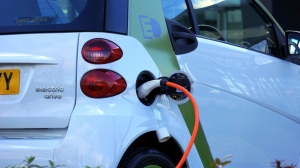What Does The Future Of Vehicles Look Like?

Technological innovation seems to be ramping up exponentially, decade after decade, and that’s extremely exciting. It’s also shifting the norms of… well, everything.
This is especially true of vehicles, as the automotive industry is currently undergoing rapid change, with every mainline manufacturer doing their best to try and get ahead of the electric curve. We think of Tesla as being the absolute last word in this kind of inquiry, but remember, this company is only the amazing pioneer, not the final statement.
For this reason, thinking ahead and considering just what automotive norms we’re likely to see in the next ten to twenty years can be an entertaining exercise, and can help us ready our expectations as consumers. Of course, no one can actually know what the exact trends may be a decade from now, but we can take an educated guess based on the statements given by car companies, released models, and how certain laws (like the decreased emissions bills) will shape how cars and roads change our environment in the long run.
Let’s consider what some of these changes may be, together:
Vehicle Simulations Taking Precedence
Jaguar have recently pioneered the world’s most primary simulated vehicle, only creating one replica copy and presenting their new hypercar (all electric) in titles like Gran Turismo 5. Why is this? Well, video games are becoming simulations with their own generated and realistic physics, tuning systems, and 1:1 representations of how a car can handle. This means that we’re likely to see more and more companies indulging their design skills in tools like these, if only to see that which is truly feasible. That can be exciting for any car nut to see.
All-Electric Vehicles
Many manufacturers have weight in with HEPV vehicles or all-electric models so far, and it’s truly exciting to compare and contrast their design philosophies here. In fact, with the help of a logbook loan, we may even be able to put these vehicles to the test ourselves.
However, we can expect all-electric to soon change from a novelty into a default and even affordable option, as charging stations become more reachable worldwide, governments incentivize their purchase to reduce emissions, and roads become quieter and more comfortable with their presence.
Connected Cars & Predictive Maintenance
It’s easy to imagine a not‑too‑distant future where your car sends you a polite push notification before you’ve even noticed a wobble in the steering wheel. Thanks to ever‑cheaper onboard sensors and lightning‑fast 5G links, tomorrow’s vehicles will stream performance data to secure cloud platforms, where machine‑learning models can sift through millions of data points to spot anomalies long before they become faults. With continuous over‑the‑air software updates, manufacturers will also be able to roll out feature upgrades overnight, improving everything from battery management to in‑cabin entertainment without a single workshop visit. Crucially, real‑time diagnostics will transform the annual service from a guessing game into a quick, targeted check‑up, saving drivers both time and money while boosting overall road safety.
Self-Driving Vehicles
Self-driving vehicles seem like something of a mini-pipe-dream right now, but the AI that programs this kind of interactivity is actually in development, and the future of these models can provide an exciting standard regarding how road signs are marked, what we expect from programming our routes, digital assistants in our vehicles, and of course, how all of this influences car security, upkeep, safety, and more. Merely checking the latest research provides us a wealth of matters to feel excitement in. It will also be interesting to see how these technologies impacts the haulage and transport job categories, as drivers become less of an essential position, instead making room for logistical maintenance roles.
With this consideration, we hope that the future of automotive innovation is something we can all enjoy.


